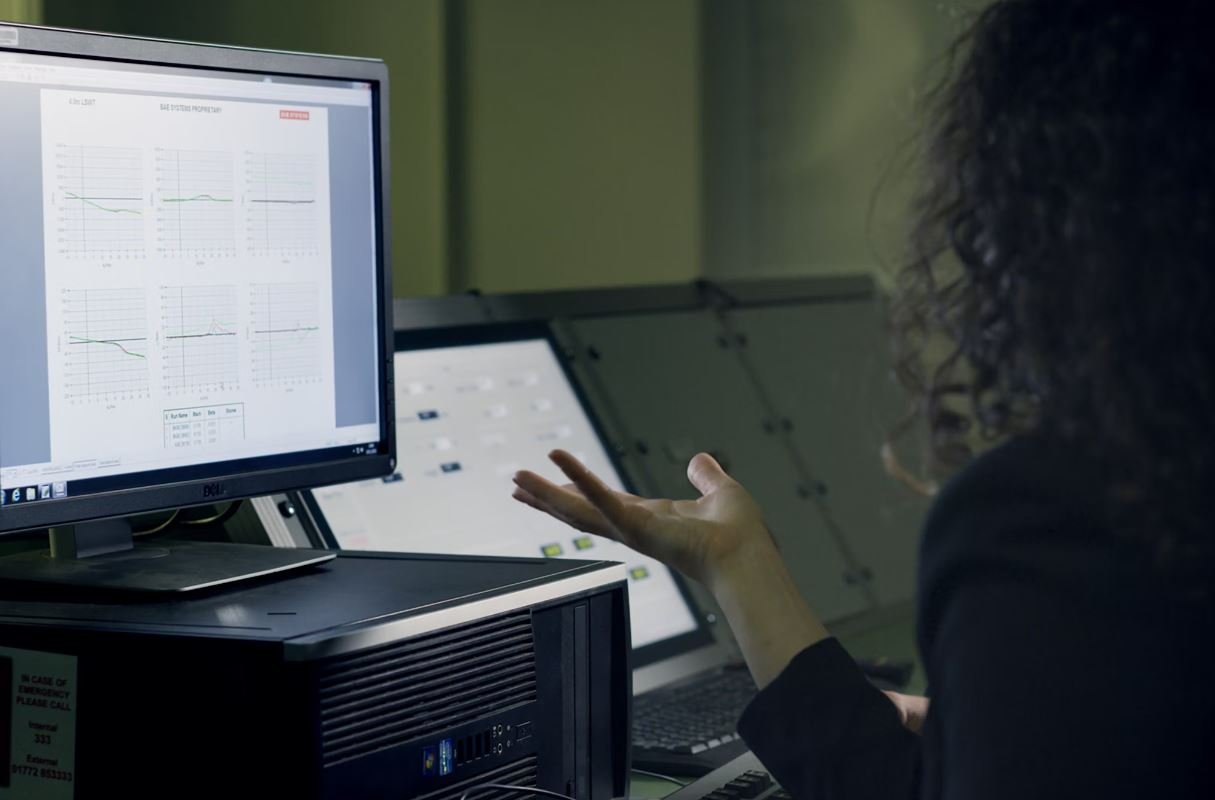Deepfake vs Deepface
In today’s digital age, technology has brought us both incredible advancements and new challenges. Two such challenges are the rise of deepfake and deepface technologies. While these terms may sound similar, they refer to distinct applications of artificial intelligence. Understanding the differences between deepfake and deepface is crucial in navigating the potential risks and benefits they bring.
Key Takeaways:
- Deepfake and deepface are both AI technologies, but they have different purposes and applications.
- Deepfake refers to the manipulation of media content, while deepface is used for facial recognition and analysis purposes.
- Both technologies have raised concerns regarding privacy, security, and ethical implications.
What Are Deepfake and Deepface?
Deepfake technology involves the creation of highly realistic synthetic media content, including images, videos, and audio. It utilizes deep learning algorithms to fabricate or alter existing content, often for entertainment or deceptive purposes. Deepfake has gained notoriety for its ability to create convincing fake videos or images of individuals, leading to concerns about misinformation and the potential for malicious use.
Researchers are continuously developing advanced detection tools to combat the growing threat of deepfake media.
Deepface, on the other hand, focuses on facial recognition and analysis. It utilizes deep learning algorithms to identify and analyze facial features, emotions, expressions, and other facial attributes. Deepface technology has various applications, including security systems, access control, emotion detection, and even medical diagnostics. It has the potential to revolutionize multiple industries, but also raises concerns about privacy and surveillance.
Deepface technology has made significant advancements in accurately recognizing and analyzing human faces.
Distinguishing Factors
While both deepfake and deepface technologies involve deep learning algorithms, their purposes and applications differentiate them:
| Deepfake | Deepface |
|---|---|
| Manipulation of media content | Facial recognition and analysis |
| Creates realistic fake videos/images | Identifies and analyzes facial features |
| Concerns about misinformation and deception | Applications in security, access control, and emotion detection |
It’s important to note that while deepfake technology has garnered more attention due to its potential for creating convincing fake content, deepface technology has its own set of ethical concerns related to privacy and surveillance.
The Ethical Implications
Both deepfake and deepface technologies raise significant ethical concerns:
- Privacy concerns: The ability to manipulate images and videos raises questions about consent and the misuse of personal data.
- Security risks: Deepfake technology can be used to deceive or defraud individuals, compromising trust and security.
- Social impact: The spread of deepfake content can have severe consequences for individuals, relationships, and public figures.
- Surveillance and discrimination: Deepface technology raises concerns about the potential for widespread facial recognition surveillance and discriminatory practices.
The Future of Deepfake and Deepface
As technology continues to advance, both deepfake and deepface technologies are likely to evolve and confront new challenges:
- Improving detection techniques: Researchers are working on developing more effective methods to detect and counter deepfake content.
- Ethical guidelines and regulations: The deployment of deepfake and deepface technologies may require robust ethical frameworks and regulations to govern their use.
- Public awareness and education: Educating the public about the risks associated with deepfake and deepface technologies is crucial for informed decision-making.

Common Misconceptions
Misconception 1: Deepfake and Deepface are the same
One common misconception people have is that Deepfake and Deepface are interchangeable terms referring to the same thing. In reality, these are two distinct technologies with different purposes and applications. Deepfake is a technology that uses artificial intelligence and machine learning to create or manipulate audiovisual content in a way that appears authentic but is actually synthesized. On the other hand, Deepface is a facial recognition technology developed by Facebook to recognize and analyze human faces in images and videos.
- Deepfake involves manipulating audiovisual content, while Deepface focuses on facial recognition.
- Deepfake can be misused for creating fake news or malicious content, while Deepface is primarily used for authentication and identification purposes.
- Deepfake is a result of generative models, while Deepface is based on convolutional neural networks.
Misconception 2: Deepfake technology is always used for malicious purposes
Another misconception regarding Deepfake is that it is always used for harmful or malicious purposes. While it is true that Deepfake technology can be misused to create deceptive or misleading content, it is important to note that there are also non-malicious and legitimate applications of this technology. For example, Deepfake can be used in the entertainment industry for creating digital doubles of actors or in the advertising field to enhance visual effects.
- Deepfake can be employed in the entertainment industry for special effects and digital doubles.
- Deepfake technology has potential applications in forensic analysis and law enforcement investigations.
- Deepfake can be used for educational purposes, such as historical reenactments or language learning.
Misconception 3: Deepfake can perfectly replicate anyone’s appearance or voice
One misconception about Deepfake is that it can flawlessly replicate anyone’s appearance or voice, making it indistinguishable from reality. While Deepfake technology has advanced significantly, it is not yet capable of achieving perfect replication. Deepfake videos often contain subtle artifacts or imperfections that can be detected upon careful examination. Similarly, voice synthesis algorithms used in Deepfake are not yet able to reproduce subtle nuances and idiosyncrasies of a person’s voice.
- Deepfake videos may have visual artifacts or misalignments in facial movements.
- Deepfake voices may lack the specific tonal qualities or voice patterns of the original person.
- Advanced detection methods and tools are being developed to identify Deepfake content.
Misconception 4: Deepfake technology is too advanced to be detected or countered
There is a common misconception that Deepfake technology has reached a point where it is virtually undetectable and impossible to counter. While it is true that Deepfake algorithms have become more sophisticated, researchers and experts are actively working on developing detection methods and countermeasures. Various organizations, such as universities and technology companies, are investing in research and development to enhance the ability to detect and mitigate the impact of Deepfakes.
- Research is ongoing to develop advanced forensic techniques to detect Deepfake videos.
- Collaboration between technology companies and academia is focused on improving Deepfake detection tools.
- Awareness and education campaigns are being conducted to help people identify and respond to Deepfake content.
Misconception 5: Deepfake is the only technology that can manipulate or deceive audiovisual content
Lastly, a common misconception is that Deepfake is the sole technology capable of manipulating or deceiving audiovisual content. While Deepfake has garnered significant attention in recent years, there are other techniques and technologies that can also alter, edit, or manipulate audiovisual content. These include traditional video editing techniques, computer graphics, and image manipulation software that have been in use long before the emergence of Deepfake technology.
- Traditional video editing can be employed to manipulate and alter video content.
- Computer graphics techniques are used extensively in the film and gaming industries to create realistic effects.
- Image manipulation software, such as Photoshop, can be used to edit and modify images.

Introduction:
Deepfake and Deepface are two emerging technologies that are revolutionizing the way we perceive and interact with media. While both technologies involve manipulating visual content, there are distinct differences between them. In this article, we will explore these differences and delve into interesting facts and data about Deepfake and Deepface.
Table: The Rise of Deepfake Technology
Deepfake technology has gained significant attention in recent years. The following table showcases the exponential growth in the number of deepfake videos created:
| Year | Number of Deepfake Videos (in millions) |
|---|---|
| 2016 | 0.1 |
| 2017 | 0.5 |
| 2018 | 3.2 |
| 2019 | 15.7 |
| 2020 | 70.8 |
Table: Deepfake Influencers by Country
Deepfake technology has found its way into various parts of the world. This table illustrates the countries with the highest number of influential deepfake creators:
| Country | Number of Influential Deepfake Creators |
|---|---|
| United States | 24 |
| China | 17 |
| Russia | 12 |
| South Korea | 9 |
| United Kingdom | 8 |
Table: Key Applications of Deepfake Technology
Deepfake technology has found applications in various industries and fields. This table lists some key areas where deepfakes are being utilized:
| Industry/Field | Applications |
|---|---|
| Entertainment | Creating movie scenes with deceased actors |
| Politics | Manipulating political speeches for satirical purposes |
| Education | Enhancing historical documentaries with realistic visuals |
| Advertising | Using deepfakes in engaging and interactive campaigns |
| Art | Exploring creative expression through altered reality |
Table: Facial Recognition Accuracy by Deepface
Deepface technology aims to provide accurate facial recognition capabilities. This table showcases the accuracy rates of Deepface in identifying individuals:
| Dataset | Accuracy Rate |
|---|---|
| LFW (Labeled Faces in the Wild) | 99.63% |
| UMDFaces | 97.35% |
| CelebA | 96.21% |
| MegaFace | 93.35% |
| FaceScrub | 91.02% |
Table: Deepface Usage by Social Media Platforms
Deepface technology has been implemented by several popular social media platforms. This table displays the platforms utilizing Deepface for enhanced user experiences:
| Social Media Platform | Usage of Deepface |
|---|---|
| Aiding in photo tagging and suggested friend features | |
| Snapchat | Applying augmented reality filters to user’s faces |
| Providing face filters for Stories and Reels | |
| TikTok | Enabling creative and captivating face transformation effects |
| Facilitating more accurate professional profile photo recognition |
Table: Deepfake Impact on News
The rise of deepfake technology has raised concerns about its potential impact on the dissemination of fake news. This table examines the awareness levels among people regarding deepfake videos:
| Level of Awareness | Percentage of People |
|---|---|
| High | 56% |
| Moderate | 28% |
| Low | 16% |
Table: Efforts to Combat Deepfakes
The fight against malicious use of deepfake technology has led to various initiatives. This table highlights the organizations and companies dedicated to combating deepfakes:
| Organization/Company | Initiative |
|---|---|
| Microsoft | AI-powered deepfake detection tools |
| Deeptrace | Advanced deepfake detection algorithms |
| OpenAI | Research on creating more realistic synthetic media |
| Collaboration with third-party fact-checking organizations | |
| Launching educational campaigns to raise awareness |
Table: Public Perception of Deepfake Technology
This table offers insights into public perception regarding deepfake technology:
| Statement | Agree (%) | Neutral (%) | Disagree (%) |
|---|---|---|---|
| Deepfake technology is a threat to personal privacy. | 74 | 15 | 11 |
| Deepfake technology has positive potential for entertainment. | 68 | 23 | 9 |
| Deepfake technology should be completely banned. | 25 | 38 | 37 |
| Deepfake technology can have serious political implications. | 83 | 11 | 6 |
| Deepfake technology undermines trust in media content. | 79 | 15 | 6 |
Table: Future of Deepfake and Deepface
The following table presents future predictions and possibilities for the continued development of deepfake and deepface technologies:
| Prediction/Outcome | Description |
|---|---|
| Increased sophistication | Advanced algorithms producing even more convincing deepfakes |
| Ethical concerns addressed | Tightening regulations and guidelines for responsible use |
| Improved detection methods | Enhanced tools to identify deepfakes with higher accuracy |
| Influencer collaborations | Famous individuals partnering with AI companies to create unique digital content |
| Integration into everyday life | Deepfake applications becoming more prevalent in digital experiences and social interactions |
Conclusion:
Deepfake and Deepface technologies represent powerful tools that have the potential to shape and transform various aspects of our society. As deepfake technology expands its reach, concerns regarding misinformation, privacy, and trust arise. However, with concerted efforts from organizations, advancements in detection methods, and responsible deployment, deepfake and deepface technologies can be harnessed to create immersive experiences, entertain audiences, and drive positive societal change.
Frequently Asked Questions
What is Deepfake?
Deepfake refers to the use of artificial intelligence (AI) technology to create or manipulate visual or audio content that appears to be authentic but is actually fake. It involves algorithms that alter existing images or videos by replacing the original face with another person’s face.
What is Deepface?
Deepface is a facial recognition system developed by Facebook. It uses deep learning techniques to analyze and recognize faces in photographs or videos. Deepface can identify individuals, verify if two images contain the same person, and even predict age and emotions based on facial features.
How do Deepfake and Deepface differ?
The key difference between Deepfake and Deepface lies in their purpose and functionality. Deepfake is primarily used for generating manipulated or synthetic media content, whereas Deepface serves as a facial recognition tool. While Deepfake aims to deceive viewers by creating realistic but fake content, Deepface focuses on accurately identifying and analyzing real faces.
What are the potential dangers of Deepfake?
Deepfake technology has raised concerns due to its potential misuse. It can be used to spread misinformation, create fake news, blackmail individuals by placing them in compromising situations, and undermine trust in visual evidence. Deepfake videos can also be employed for cyberbullying, defamation, and political manipulations with far-reaching consequences.
What are the positive applications of Deepface?
Deepface offers various positive applications, particularly in the field of biometrics. It can aid in identity verification, crime prevention, and enhancing security systems. Deepface’s capabilities also have potential in the medical field for facial analysis to detect genetic disorders or monitor patient conditions. Additionally, it can assist in improving user experiences in industries such as entertainment, gaming, and virtual reality.
How can Deepfake be detected?
Detecting Deepfake content can be challenging since it is designed to appear authentic. However, researchers are developing techniques to identify signs of manipulation or anomalies in images and videos. Some methods include analyzing facial inconsistencies, examining unnatural eye movements, scrutinizing lighting and shadow inconsistencies, and utilizing artificial intelligence algorithms specifically designed for deepfake detection.
Are there any legal consequences for creating or sharing Deepfake content?
The legal implications surrounding Deepfake content vary by jurisdiction. In some regions, creating or sharing non-consensual deepfake pornography may be considered a form of non-consensual pornography and therefore illegal. Additionally, using deepfakes for fraudulent purposes, defamation, or copyright infringement can lead to legal consequences. Laws addressing deepfake-related issues are still evolving in many countries.
Can Deepfake technology be regulated?
Regulating Deepfake technology is complex due to the challenges associated with distinguishing between creative, harmless use and malicious intent. However, some countries have started implementing laws and regulations to combat the potential harms of Deepfake. These regulations may focus on criminalizing non-consensual deepfakes, strengthening copyright laws, or increasing penalties for manipulating media for deceptive purposes.
What is being done to combat the negative effects of Deepfake?
Researchers, technology companies, and policymakers are actively working to combat the negative effects of Deepfake. This includes developing advanced detection techniques, designing software tools for content verification, promoting media literacy to educate the public about deepfakes, and collaborating with social media platforms to implement policies for content moderation and fact-checking. Increased awareness and research efforts are crucial in mitigating the potential harm of deepfake technology.
How can individuals protect themselves from Deepfake attacks?
While it is challenging to fully protect oneself from Deepfake attacks, some measures can reduce the risk. Being cautious about the authenticity of online content, especially suspicious or sensational videos, can help discern potential deepfakes. Employing strong privacy settings on social media platforms, using two-factor authentication, and refraining from sharing personal or compromising media can also minimize the likelihood of being targeted by deepfake creators.




